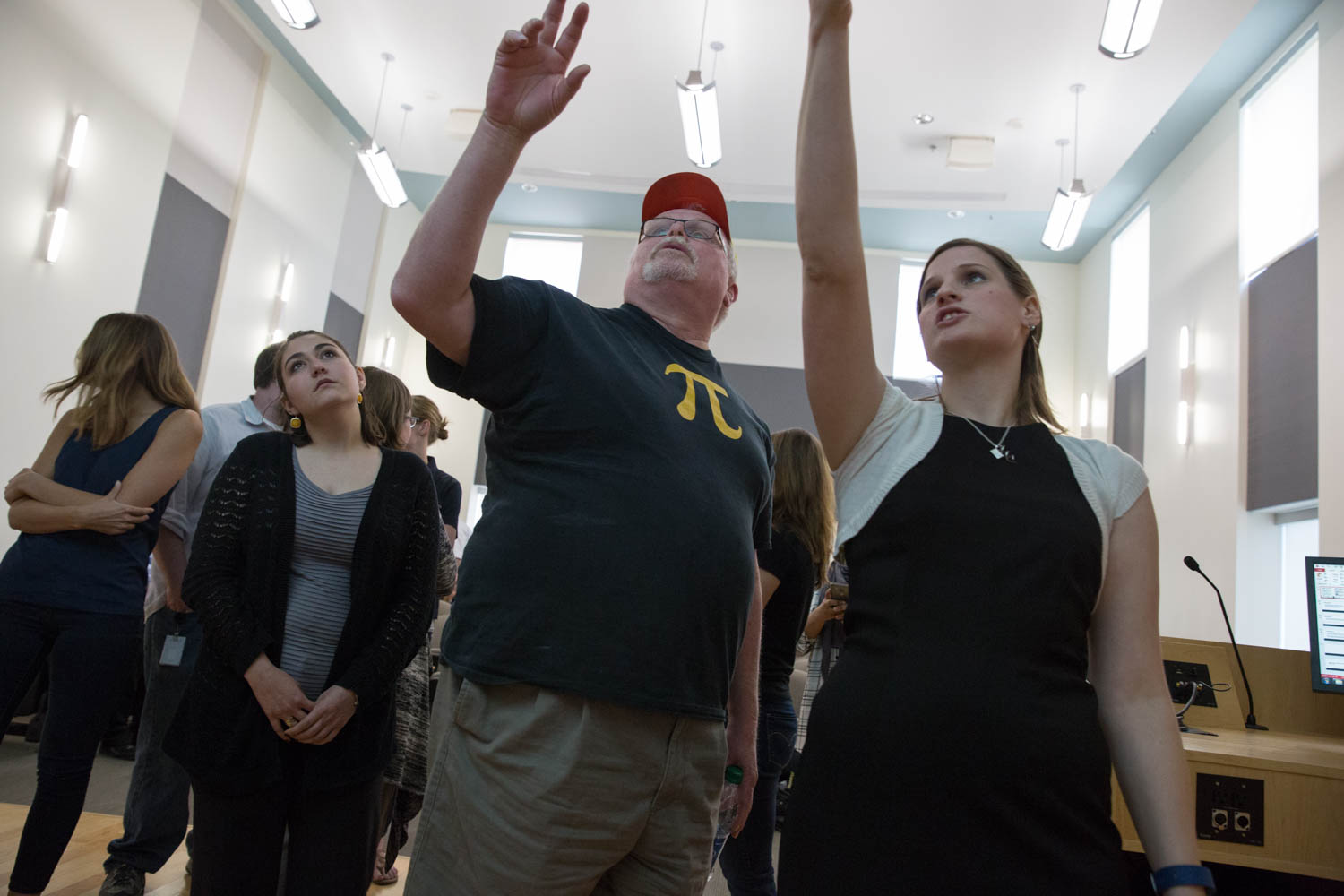By David Frey
When forensic science professor Daniele Podini’s students examined the evidence in the 1984 rape and murder of a 9-year-old girl, they discovered a problem. The man police accused—and a jury convicted—for the crime in what the class was told was a mock case did not seem to be the perpetrator.
The suspect’s DNA did not appear in forensic or on physical evidence police gathered. Another man’s did. Appearing before more than 40 fellow students and onlookers, they presented their findings, explaining to peers what they would have to explain to a jury in a real case.
“The evidence we collected exonerates Antonio Garcia as the perpetrator,” Racquel Hopkins, a student in the Forensic Molecular Biology class, announced to the group.
But there was a catch. This was not a mock case. This was a real case, and the man imprisoned for nearly nine years for a crime he didn’t commit was sitting in the back of the classroom listening as the students presented evidence that could have acquitted him at trial
“So you solved a real case,” Dr.. Podini told the group after he revealed his secret. “Congratulations.”
In real life, the suspect’s name wasn’t Antonio Garcia. It was Kirk Bloodsworth, who was a 22-year old Eastern Shore waterman and ex-Marine when he was falsely accused in the 1984 incident.
His message to the class was simple.
“It’s all about integrity. Doing it right,” he said. “If it’s right, it isn’t wrong to stand up.”
Police arrested Mr. Bloodsworth after an anonymous tipster said he matched a police sketch that aired on TV news shows. Eyewitnesses said they saw him with the victim, although some of them, including children who were playing hide and seek with the victim, initially had been unable to identify him in a lineup.
Convicted and sentenced to death row, and after an appeal, resentenced to two life terms in prison, Mr. Bloodsworth insisted on his innocence.
In the early 1990s, when he heard about DNA testing, he succeeded in having his case reopened. The DNA evidence pointed to another suspect, and after nearly 9 years behind bars, “Bloodsy,” as he was known to fellow inmates, was released and pardoned in 1993. The other man was sentenced.
“When you work on these cases, it’s somebody’s life,” Mr. Bloodsworth told the students, his voice sometimes breaking as he told his story.
“You could be the difference between an innocent man going to death row or walking out a free man,” he said.
That was exactly the lesson Dr. Podini wanted to impress on the students.
“It’s a fact that their job is going to affect people’s lives and have an impact on society,” said Dr. Podini, an associate professor of forensic molecular biology in the Columbian College of Arts and Sciences. “Behind every case is a person. Today was for them to never forget that.”
Ms. Hopkins said she had been questioning whether the forensic work she was considering as a career would really make a difference, but after hearing Mr. Bloodworth’s story, she changed her mind.
“It really confirms to us that this is real. We’re really helping people,” Ms. Hopkins said. “It teaches us that if you do your job right, hopefully things like that won’t happen.”


